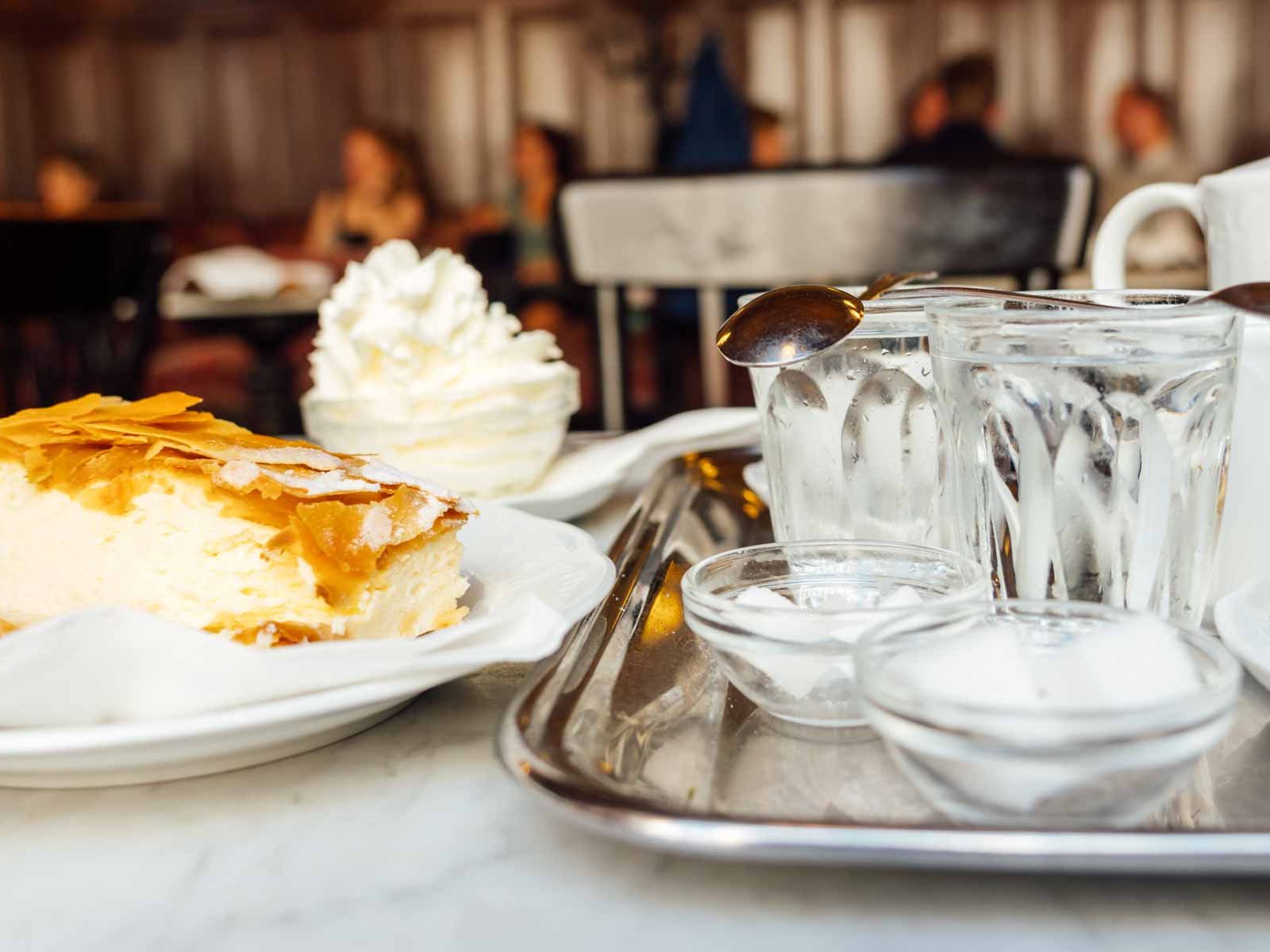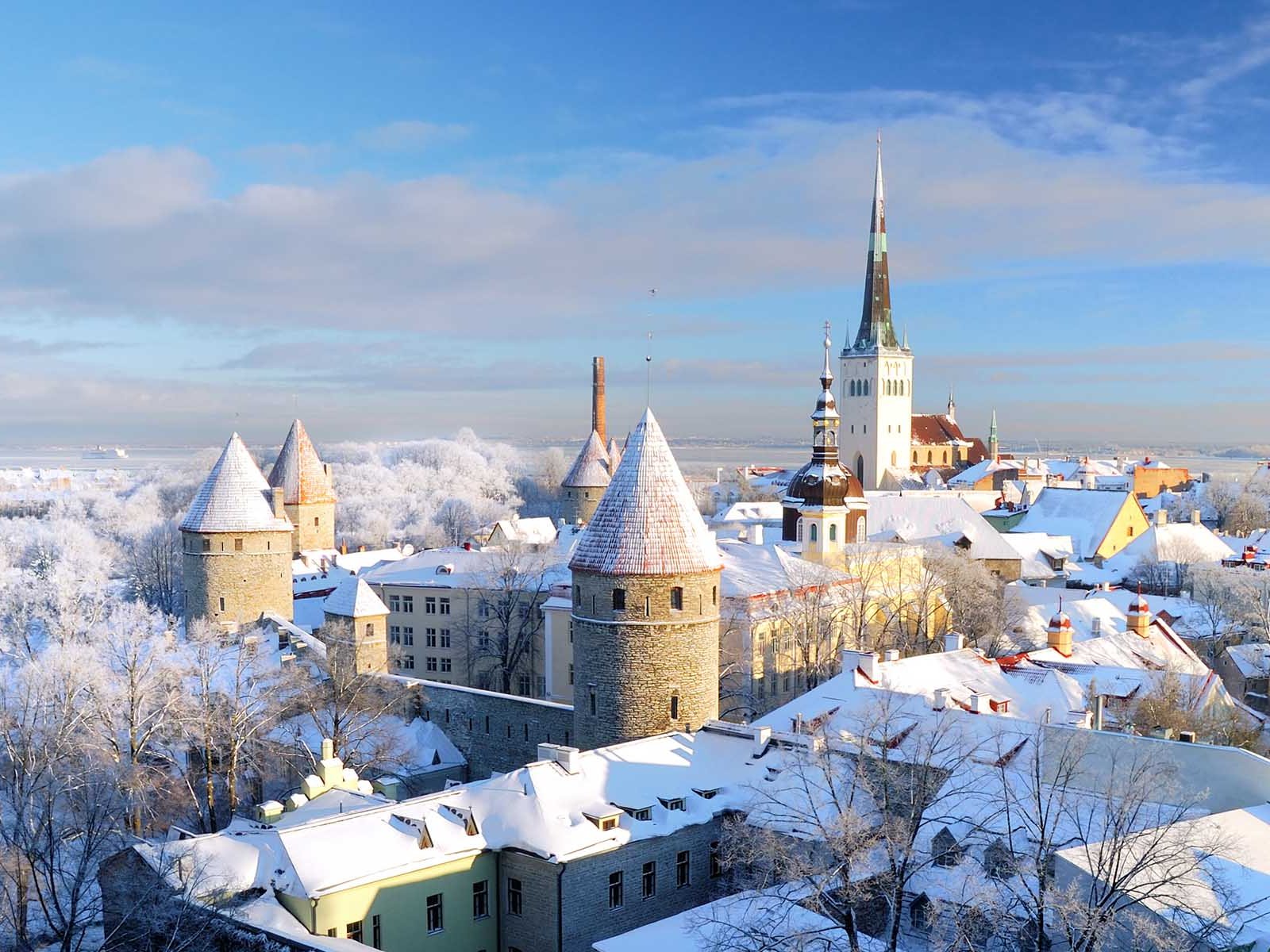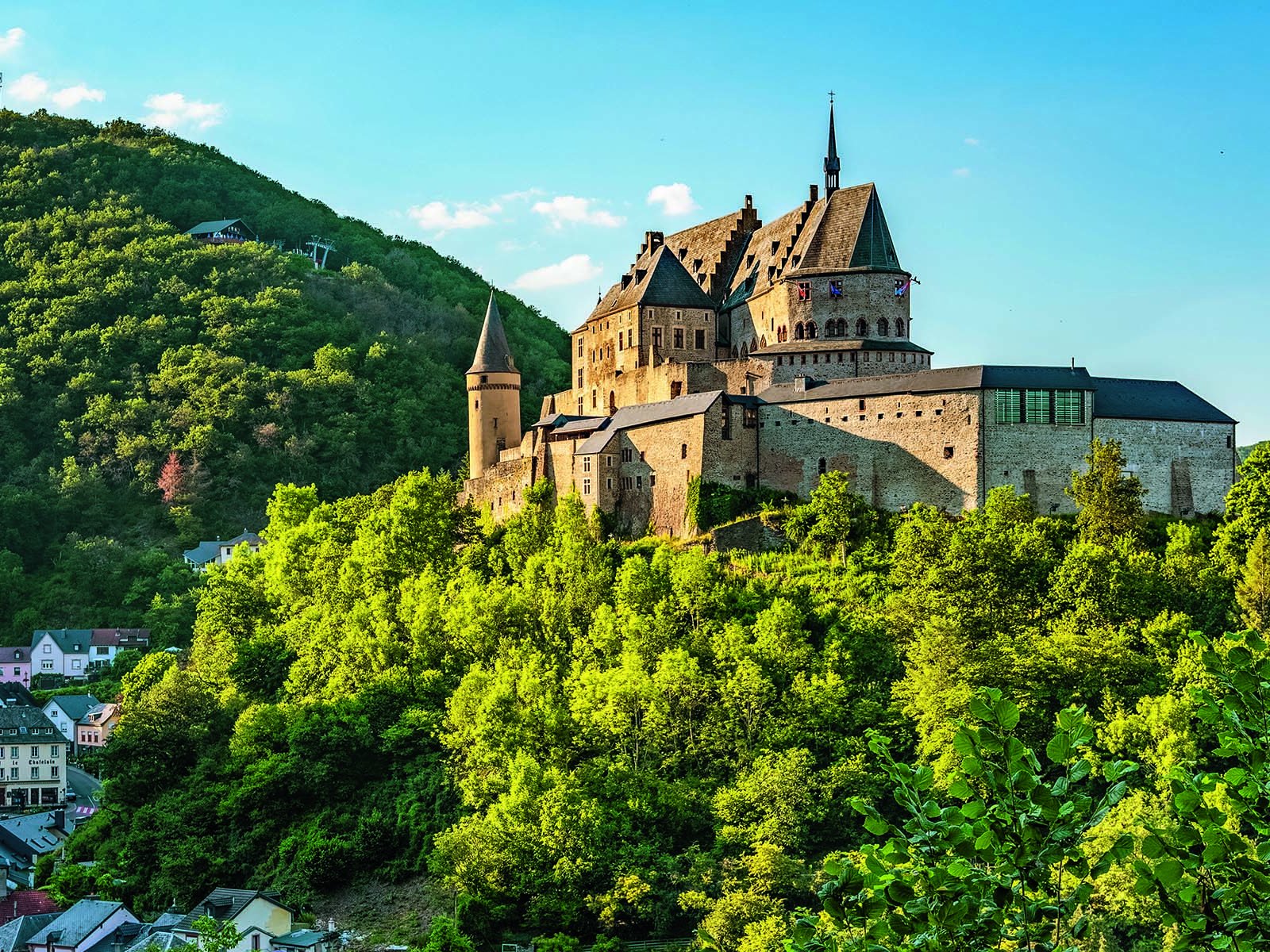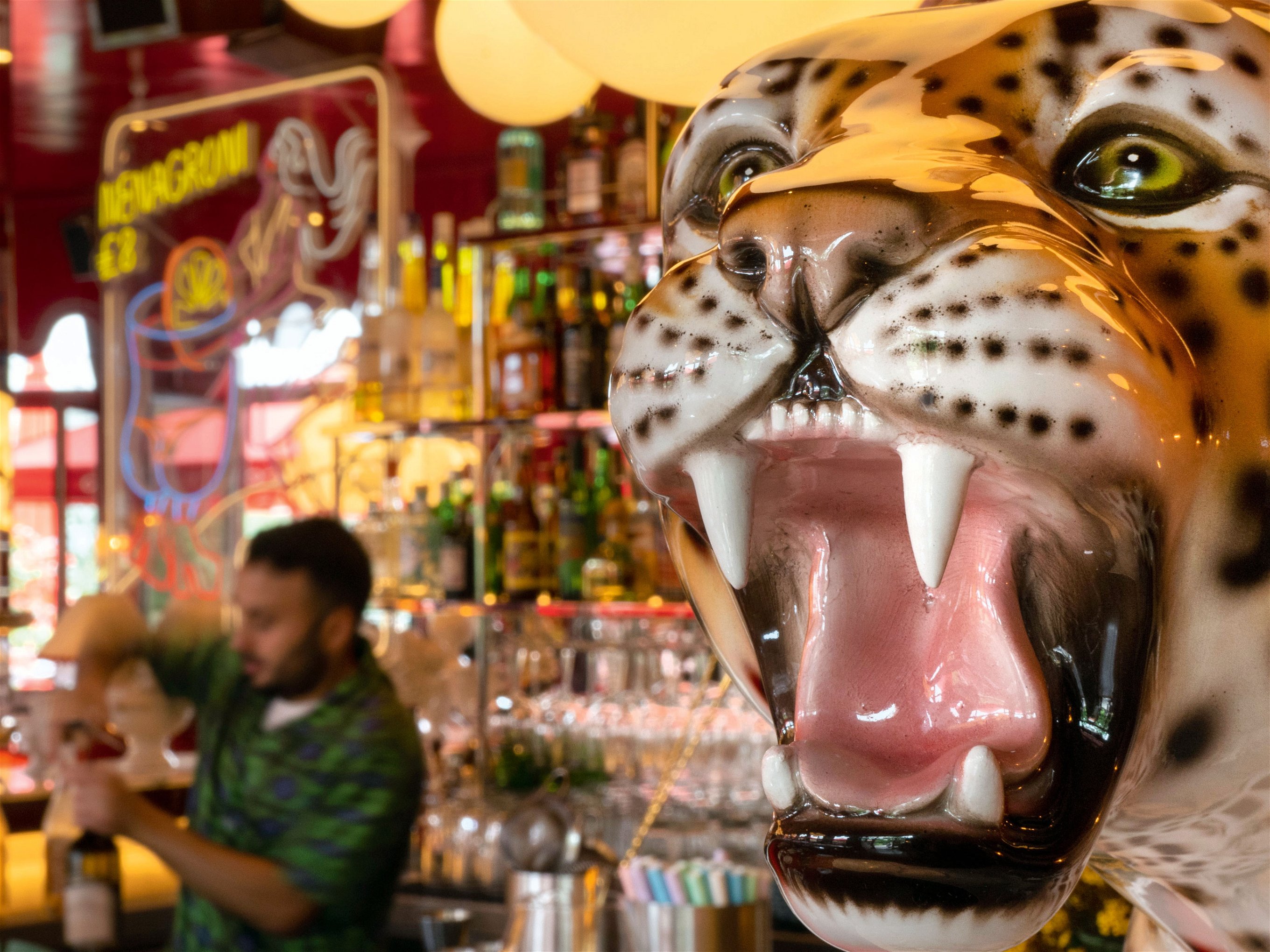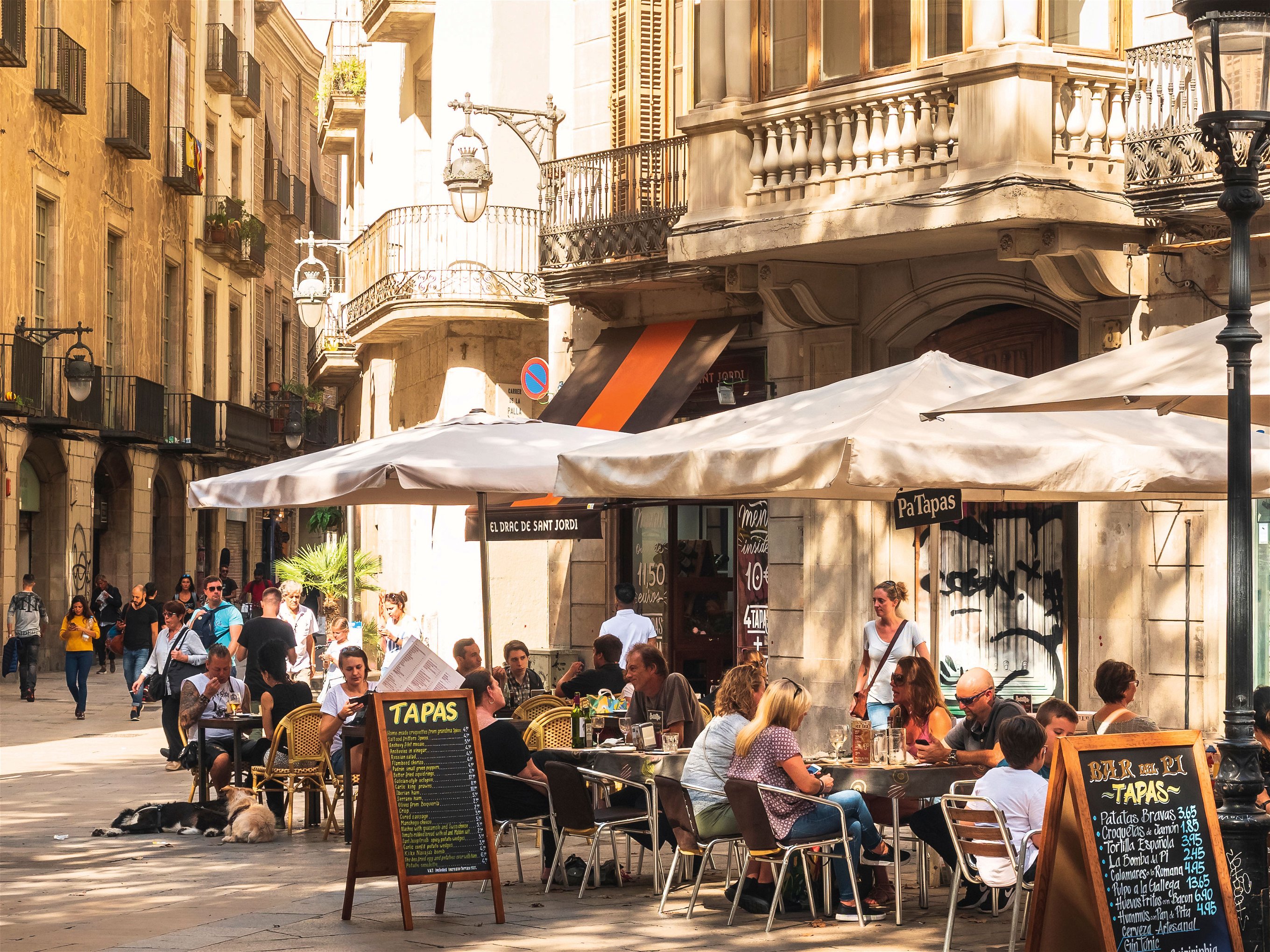Six of the Coolest Places for Coffee & Cake in Budapest
Coffee culture dates back centuries in the Hungarian capital. Here are six places you must visit for coffee and cake next time you are in Budapest.
Budapest is rightly renowned for its historic coffeehouses: grand and elegant in style, cakes and conversation. Such sanctuaries were deeply embedded in Hungary’s cultural psyche, frequented by writers, poets, artists and politicians who observed the world, exchanged ideas and plotted rebellious acts. Their golden era may have been in the 19th century, but nostalgia still tastes delicious and lingering with a newspaper or a notebook remains a treat to this day.
The spectacular New York Café built in 1884 as an investment by the New York Insurance Company with elaborate gilding is now more tourist exhibit than a place for notable regulars, and no longer keeps rolls of paper, known as dog tongues, pens and ink for writers nor offers a “writers plate” of cheese and sausage for a pittance. However most cafes still have round tables, because a newspaper was easier to pick up when the pages hung over the side, and continue to serve coffee with a little shot of water, and, perhaps a pálinka (Hungarian fruit brandy).
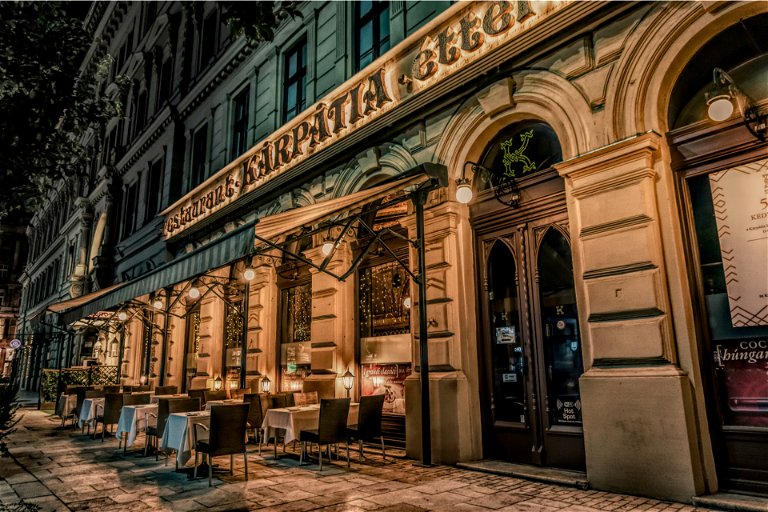
Ruszwurm
The Szamos family opened Ruszwurm in 1827, making it one of the oldest bakeries in the capital. Some of the interior features are original, including a cherrywood counter and seating in the tiny parlour. Must-eat specialities here include the famed Hungarian Dobos cake with its six layers of chocolate sponge, vanilla buttercream and brittle caramel top.
Coffee is well-made. A little more seating is available outside in the warmer months. Expect to queue, takeaways are available. My sour cherry strudel was still luscious, with plentiful fruit and ambrosial flaky strudel pastry, despite having accompanied me on a tour of Matthias Church, Buda Castle and Fisherman’s Bastion, all close by.
Gerbeaud
A layered rectangular confection of ground walnuts and apricot jam topped with chocolate called the Gerbeaud slice is almost as venerated as the vast Neoclassical building with Art Nouveau details that stretches across one whole side of Vörösmarty Square. The interior is grand and sprawling as it was gradually and irregularly expanded. Its splendor and size is breathtaking as is the grand decor of the dining room with an original Gustave Moreau painting The Red Parlour hung on brocade wall coverings, flanked by wood panels, pink veined marble floors, gilt furnishings and ornate chandeliers.
Most thrilling of all is the sheer choice of alluring cakes displayed at the vast curved counter. The krémes (similar to a mille feuille with puff pastry layered with rich vanilla cream) are considered the best in town. Basking in coffee and cake on Gerbeaud’s terrace has to be one of the most indulgent ways to wile away a few hours in Budapest.
Central
First opened in 1887, Central Grand Cafe & Bar was considered avant-garde with its state of the art electric lighting, ventilation and heating system. Situated next to the University Library, it was popular with literary figures who used it as their writing room. Frigyes Karinthy, the notable Hungarian writer, penned the Six Degrees of Separation theory at the Central. It was one of the first places to have live jazz. Revamped in 2000 and again in April 2022, according to Annabel Barber, author of Blue Guide Budapest, it is the closest modern version of a traditional coffee house to be found in the capital. All the classic cakes from Dobos and Punch torte, a rum infused sponge layered with apricot preserve and raisins, finished with gorgeous pink icing, to flódni, a cake layered with plum jam, apple, ground walnuts and poppy seeds that originated among Hungary's Jewish community, are offered here.
Muvesz
With its wrought iron balconies inscribed with the letter 'S' and handsome Neo-Renaissance facade, the building was commissioned for a spice and fine foods merchant called Ede Szenes who sold the business onto Emile Gerbeaud. A literary and arty haunt, it is now a more discreet, less tourist packed alternative to the more showy cafes.
The chiaroscuro interior and the rotating cake stand in the window flaunting their patisserie goodies is charming. Its classic Esterházy torte, named for the famous diplomat Paul III. Anton Esterházy, with alternating layers of crushed walnut sponge with chocolate and rum-laced buttercream, topped with a shiny white fondant, is impressive.
Auguszt
Known as the "Gerbeaud of Buda," Auguszt is an upmarket pastry shop and a Budapest landmark. The family operation dates back to 1870 and is currently helmed by the fourth generation: 70-year-old József Auguszt, donning a chef's hat, still mans the cashier on most days.
Auguszt has had a tumultuous history over the past 150 years – during the communist era, for example, the business was nationalised and the family deported to the Hungarian countryside. Now they offer rarely found classics like a rigó jancsi in several locations. This gateau consists of two layers of chocolate sponge held together by a luscious, mousse-like cocoa cream filling often flavoured with a splash of rum, while the cake itself is typically covered in a rich chocolate ganache. The upstairs section in Fény utca 8 is reserved for sit-down customers and features some furnishings of the original location.
Rétesbolt Anno 1926
Celebrated for its traditional strudel, Rétesbolt is a cosy, mahogany and marble furnished café where everyone should order apricot, poppy seed or cheese strudel – or indeed all three, which are made to a recipe that has been kept secret since the café opened in 1926.

